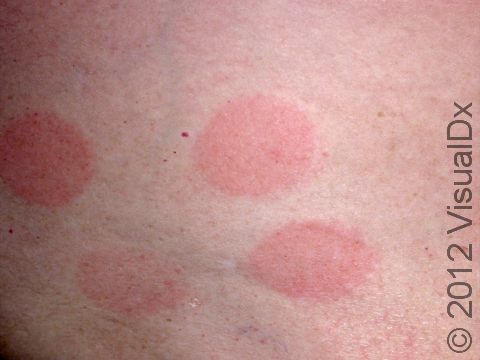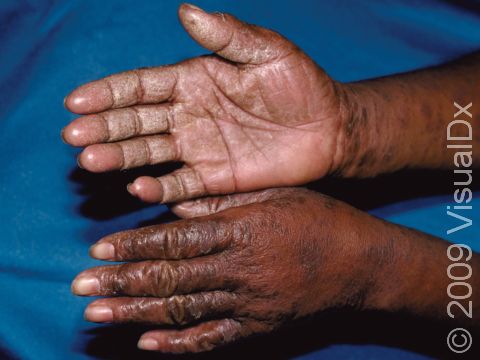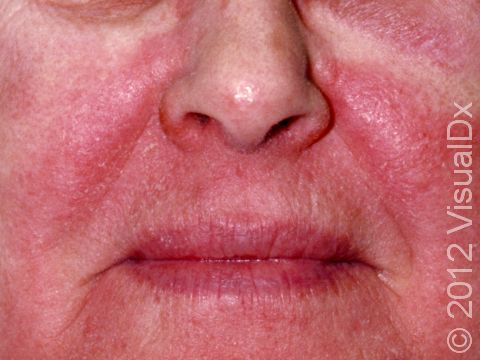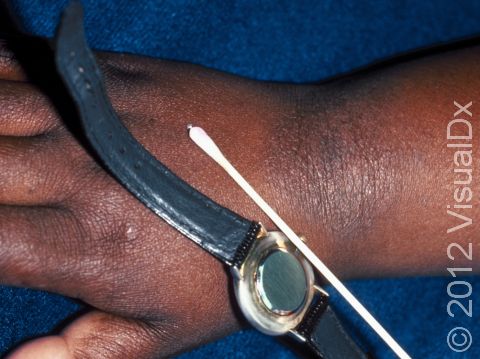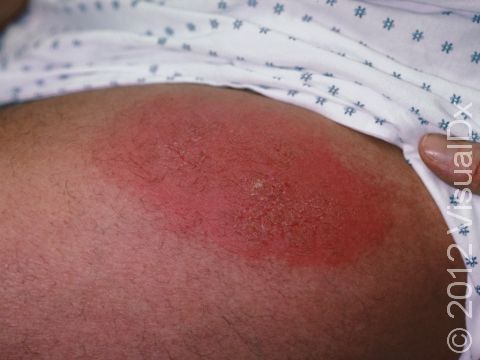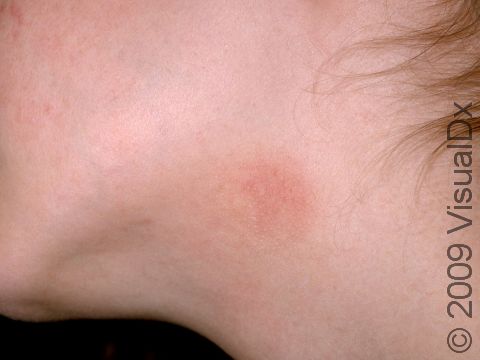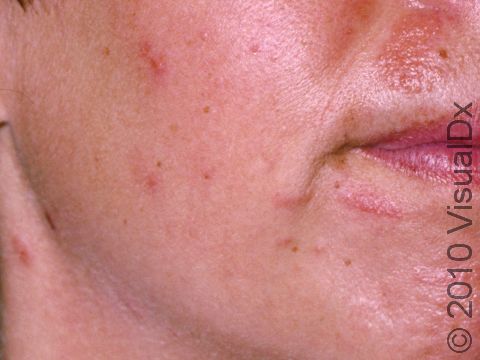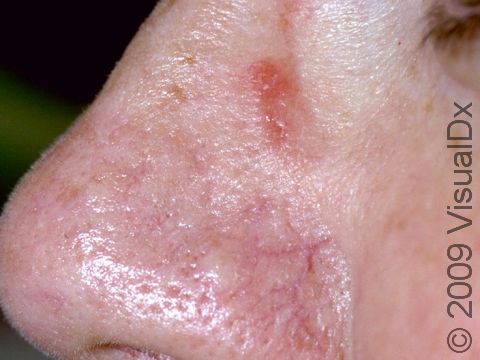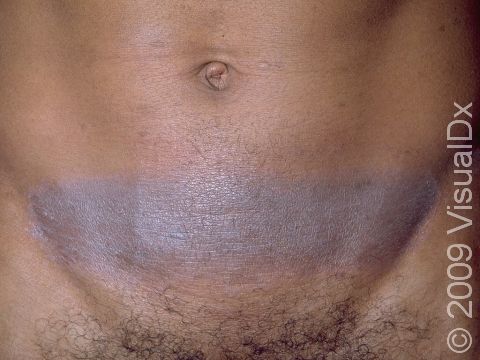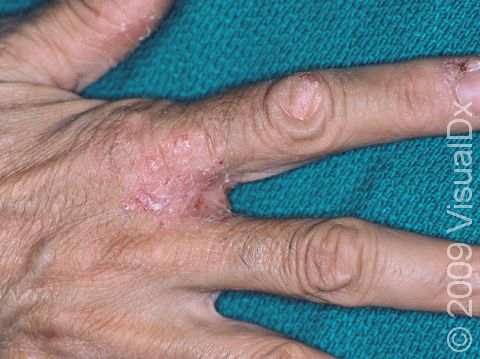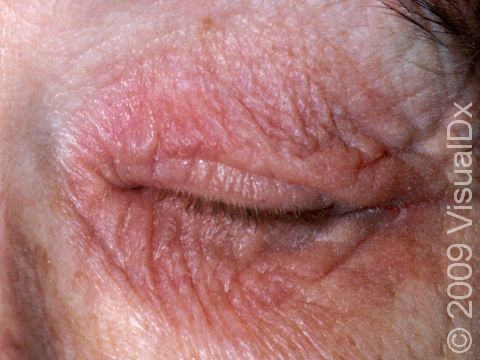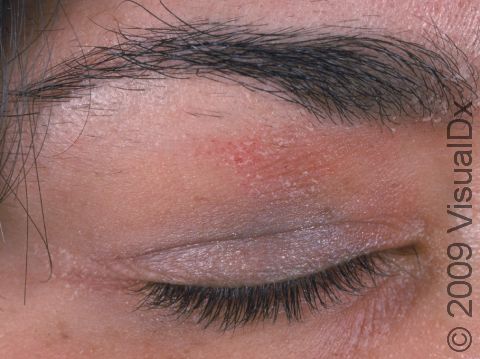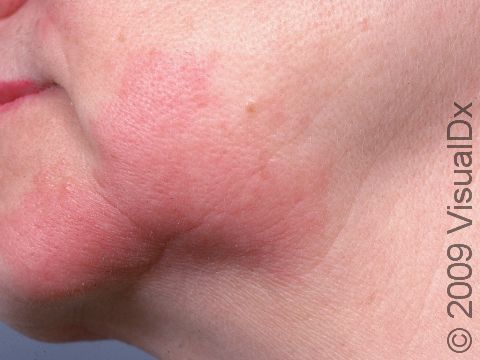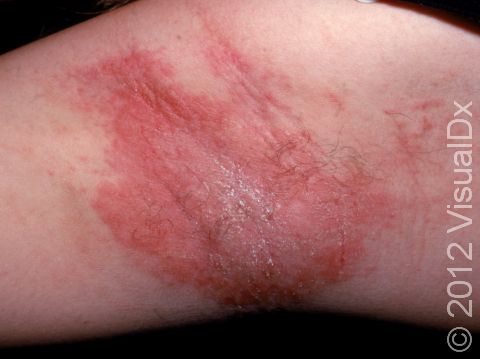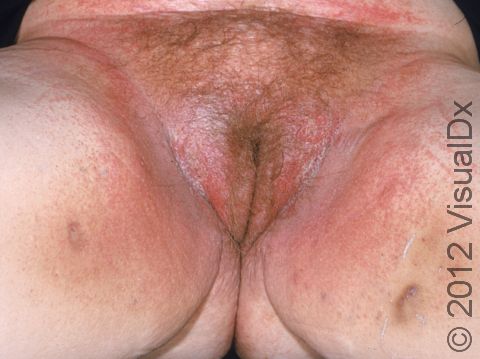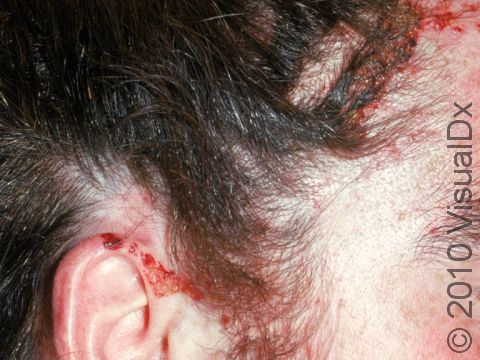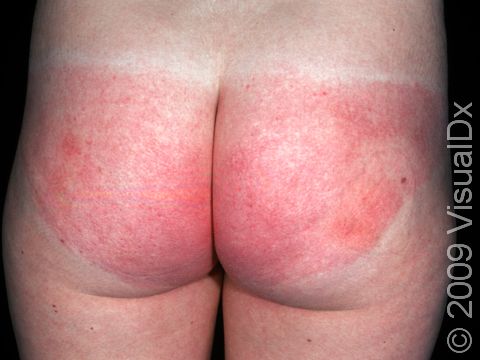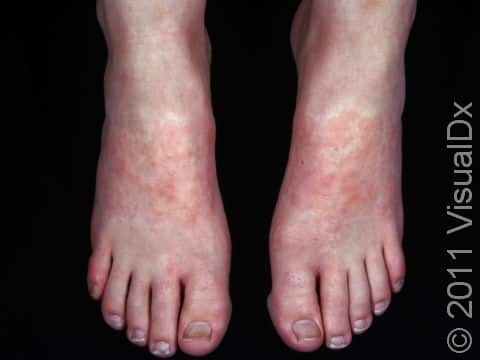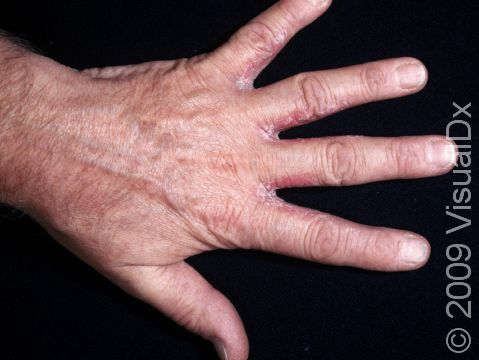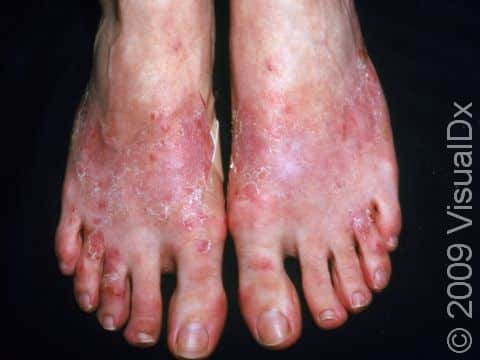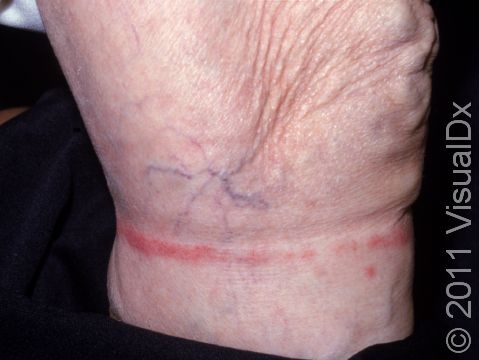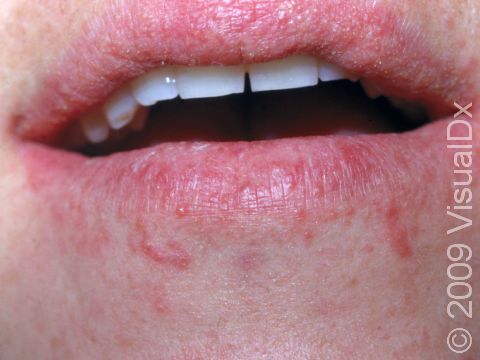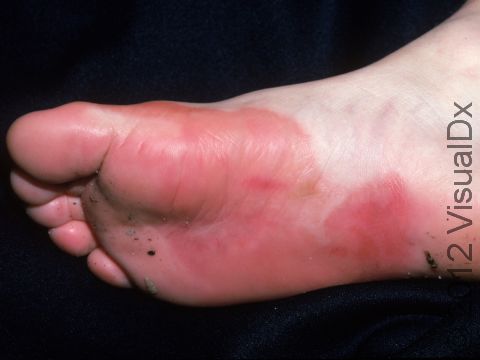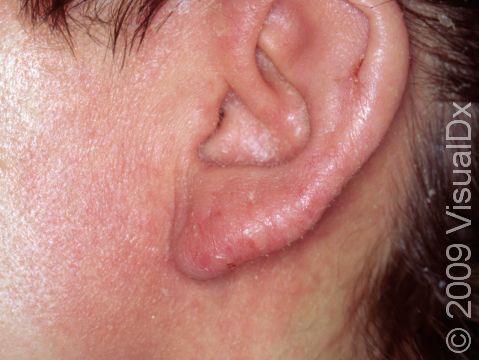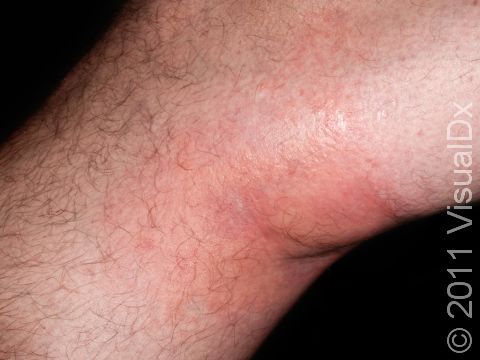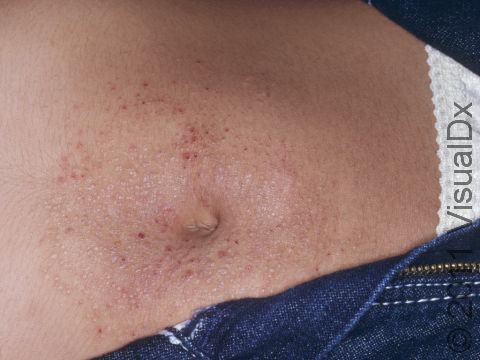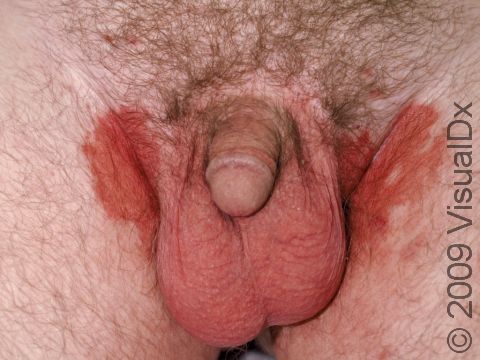
Allergic Contact Dermatitis
Allergic contact dermatitis is a delayed hypersensitivity reaction (the reaction to the allergen occurs 48–72 hours after exposure). The most common allergens causing allergic contact dermatitis often change with time, as certain chemicals come in or out of use in the manufacture of products that come in contact with the skin. Most recently, common causes of allergic contact dermatitis include nickel, chromates, rubber chemicals, and topical antibiotic ointments and creams. Frequent sensitizers in the general population also include fragrance, formaldehyde, lanolin (wool grease found in ointments and cosmetics), and a host of other common environmental chemicals.
- Nickel is found in jewelry, belt buckles, metal closures on clothing, and some cell phones.
- Chromates are used in the process of tanning leather for shoes and in cement, so they can affect construction workers who are in contact with cement.
- Rubber chemicals are found in gloves, balloons, elastic in garments, mouse pads, and swim goggles.
- Neomycin is common in triple antibiotic first aid ointments such as Neosporin® (and generic versions of Neosporin) as well as other combination preparations with other antibacterials (eg, Polysporin®). It may also be found in eye preparations and eardrops. Bacitracin is a common ingredient in antibiotic ointments and creams and can cause allergic contact dermatitis as well.
- Common allergen-containing products include cosmetics, soaps, dyes, and jewelry.
- Poison ivy is a frequent cause and is discussed separately.
Who's At Risk?
Allergic contact dermatitis can occur at any age in people of all ethnic backgrounds. Individuals with a skin condition (such as stasis dermatitis, otitis externa, or pruritus ani) requiring frequent application of topical agents can develop allergic contact dermatitis over time.
Signs & Symptoms
Allergic contact dermatitis may occur on any location of the body.
- Scaly red to pink areas of elevated skin (papules and plaques) and blisters (vesicles) may be seen. Individual lesions have distinct borders and often have a geometric shape with straight edges and sharp angles.
- Eyelid swelling is frequently seen when the allergen is unknowingly transferred from finger to lid. Affected areas are typically severely itchy.
- When the dermatitis is long-standing, the areas of elevation become thick and secondary bacterial infection is possible.
Self-Care Guidelines
- Avoid the offending agent.
- It may be helpful to avoid common triggers, such as fragrance, lanolin, nickel, etc.
Treatments
Treatment is aimed at preventing contact with the allergen.
- Symptomatic control of itching may include oral antihistamines.
- Medium- and high-potency topical steroids may be prescribed for rashes occurring on the extremities or trunk.
- Mild-potency topical steroids may be prescribed for thinner skin on the face and skin fold areas.
- In severe cases involving large body areas, a course of an oral steroid (prednisone) may be prescribed.
Visit Urgency
Seek medical evaluation for a persistent or recurrent rash of unknown origin. Your physician may perform patch testing to evaluate for potential contact allergies. Skin biopsy is sometimes used to confirm diagnosis.
Trusted Links
References
ia, Jean L., ed. Dermatology, pp.227, 252-256. New York: Mosby, 2003.
Freedberg, Irwin M., ed. Fitzpatrick’s Dermatology in General Medicine. 6th ed, pp.266, 1164-1165. New York: McGraw-Hill, 2003.
Last modified on October 11th, 2022 at 2:36 pm

Not sure what to look for?
Try our new Rash and Skin Condition Finder
